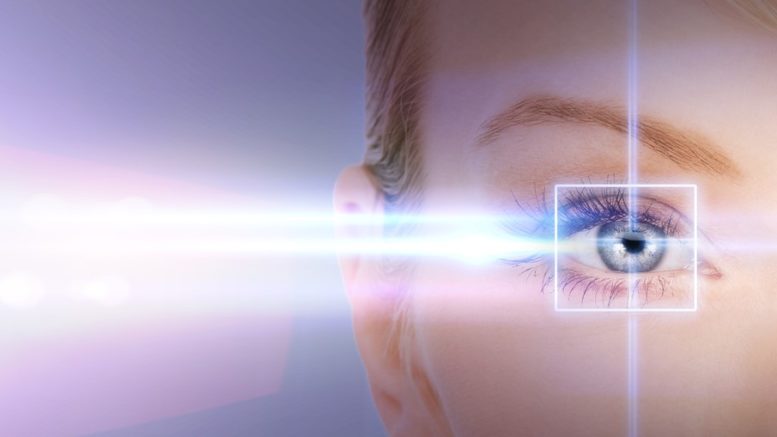Do your eyelids feel droopier and saggier than usual? Don’t worry, it’s an entirely normal phenomenon, known as “ptosis.” As we age, extra fat begins to gather in the areas above and below our eyelids; this causes sagging, drooping, and the dreaded “bags” under our eyes.
Although droopy eyelids and bags are commonly viewed as a cosmetic concern, they can present more tangible health concerns: eyelids can become so droopy that they begin to impair one’s vision. Later, we’ll discuss why this makes eyelid surgery in NYC one of the only cosmetic procedures that insurance may cover.
That’s where blepharoplasty comes in. This anti-aging procedure improves the appearance and function of the eyelids in a fast, effective, and surprisingly affordable way.
In this article, we’ll explore the process of blepharoplasty and look at the trouble areas this procedure targets.
What Is Blepharoplasty?
Eyelid lifts are one of the most common anti-aging procedures, according to HealthLine.
Blepharoplasty is a cosmetic procedure that improves the appearance and function of the eyelids. This surgery is often performed in conjunction with brow lifts and facelifts, because it improves the overall look of those procedures. The eyes are, proverbially, the “window to the soul.”
The blepharoplasty procedure involves the surgeon making incisions on the upper and lower eyelids to remove the excess muscle, skin, and fat that cause the inconvenient sagging and bags.
What Does Blepharoplasty Target?
We’ve examined the ins and outs of the procedure; now, let’s examine the reason blepharoplasty exists in the first place: sagging and drooping eyelids, known to the medical community as “ptosis.”
Excess skin and fat on the upper and lower eyelids are the most notable symptoms of ptosis, and are the most common targets of blepharoplasty.
These symptoms can be caused by aging, damage to the eyes (whether by U.V. exposure, Lasik surgery, or other potential eyelid-damaging factors), as well as by a person’s genetics.
When present in children, ptosis can even cause amblyopia (known commonly as “lazy eye”) and even long-term vision loss. Ptosis is especially important to treat when it occurs early in life, although drops, glasses, and patches are more common treatment than blepharoplasty until a person reaches adolescence.
What Can I Expect from the Blepharoplasty Process?
Unlike many other cosmetic procedures, blepharoplasty is a relatively uncomplicated outpatient procedure.
The process will begin with an initial consultation. You and your surgeon will discuss your desired outcome, and run through any concerns you or they have about risks and potential complications. For instance, you will be asked to avoid medications that may increase bleeding risk for a short period of time before and after the blepharoplasty. Smokers will also be asked to abstain from their habit for several weeks.
You can also discuss insurance coverage at this point, unlike most typically “cosmetic” procedures. If sagging eyelids (usually the upper lids) impair your vision significantly, insurance may actually cover a blepharoplasty.
Once you’ve had your initial consultation, your doctor will perform tests on your eyes; examination and measuring are crucial to ensure the best possible results. At this point, you and your surgeon can discuss further any potential complications, or factors that may affect the results of the surgery.
As for the procedure itself, general anesthesia is only used in a minority of cases; typically, a local numbing agent injected into the eye area is sufficient.
What Does Blepharoplasty Recovery Look Like?
Many people considering blepharoplasty wonder, “Isn’t eyelid surgery dangerous, or complicated?” Let’s address those concerns.
Despite common conception, eyelid surgery is quite safe and has a quick recovery process. A sizable majority of blepharoplasty patients can expect to go home the very same day.
Blepharoplasty after-care is usually simple, but important to follow: the area needs to be kept clean with gentle washing, and you cannot wear contacts for at least 14 days following the procedure (have your prescription glasses at the ready).
As with any procedure, there are potential complications and after-effects of blepharoplasty. The most common ones, all easily treatable, include:
- Dry eyes
- Itchiness in and around the eye area
- Increased sensitivity to sunlight
- Mild scarring
Many potential patients wonder, “What about the efficacy of blepharoplasty? Will I need another surgery in a few years?”
Many blepharoplasty patients can expect lifelong “lid lift” results, while others may need a brief follow-up procedure to achieve their desired outcome and appearance.
Where Can I Learn More About Blepharoplasty?
If you are interested in blepharoplasty, you can visit our page to learn more about eyelid surgery in NYC.
For people with droopy eyelids that negatively impact their vision, and for those who are simply looking to improve the overall appearance of their eyes, blepharoplasty is one of the best surgical options. Be sure to discuss any concerns with your doctor to ensure the best results from your procedure.
Thank you for taking the time to learn about the causes of ptosis and how blepharoplasty works. For more information, we encourage you to research our practice here.
